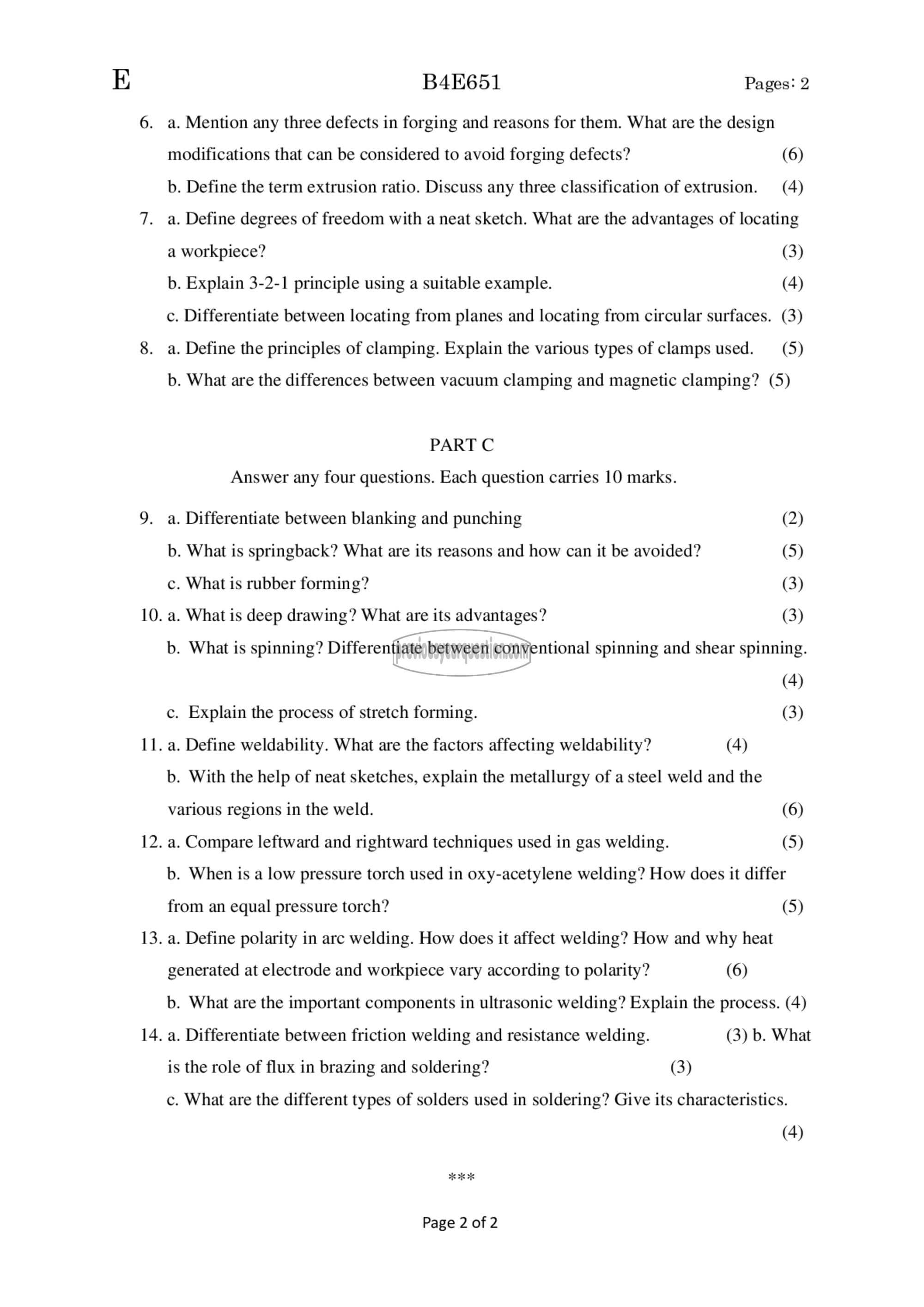APJ ABDUL KALAM TECHNOLOGICAL UNIVERSITY Previous Years Question Paper & Answer
Semester : SEMESTER 4
Subject : Manufacturing Technology
Year : 2017
Term : JUNE
Branch : MECHANICAL ENGINEERING
Scheme : 2015 Full Time
Course Code : ME 220
Page:2
6.
10.
11.
12.
13.
14.
1411651 Pages: 2
a. Mention any three defects in forging and reasons for them. What are the design
modifications that can be considered to avoid forging defects? (6)
b. Define the term extrusion ratio. Discuss any three classification of extrusion. (4)
a. Define degrees of freedom with a neat sketch. What are the advantages of locating
a workpiece? (3)
b. Explain 3-2-1 principle using a suitable example. (4)
c. Differentiate between locating from planes and locating from circular surfaces. (3)
a. Define the principles of clamping. Explain the various types of clamps used. (5)
b. What are the differences between vacuum clamping and magnetic clamping? (5)
PART ل
Answer any four questions. Each question carries 10 marks.
a. Differentiate between blanking and punching (2)
b. What is springback? What are its reasons and how can it be avoided? (5)
c. What is rubber forming? (3)
a. What is deep drawing? What are its advantages? (3)
b. What is spinning? Differentiate between conventional spinning and shear spinning.
(4)
c. Explain the process of stretch forming. (3)
a. Define weldability. What are the factors affecting weldability? (4)
b. With the help of neat sketches, explain the metallurgy of a steel weld and the
various regions in the weld. (6)
a. Compare leftward and rightward techniques used in gas welding. (5)
b. When is a low pressure torch used in oxy-acetylene welding? How does it differ
from an equal pressure torch? (5)
a. Define polarity in arc welding. How does it affect welding? How and why heat
generated at electrode and workpiece vary according to polarity? (6)
b. What are the important components in ultrasonic welding? Explain the process. (4)
a. Differentiate between friction welding and resistance welding. (3) b. What
is the role of flux in brazing and soldering? (3)
c. What are the different types of solders used in soldering? Give its characteristics.
(4)
Page 2 of 2
